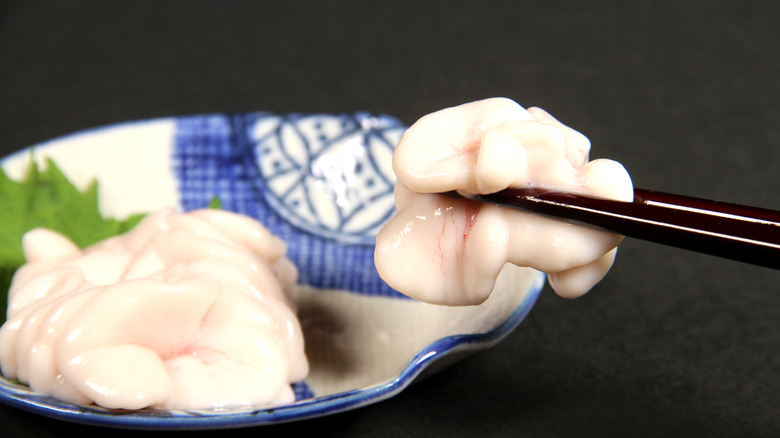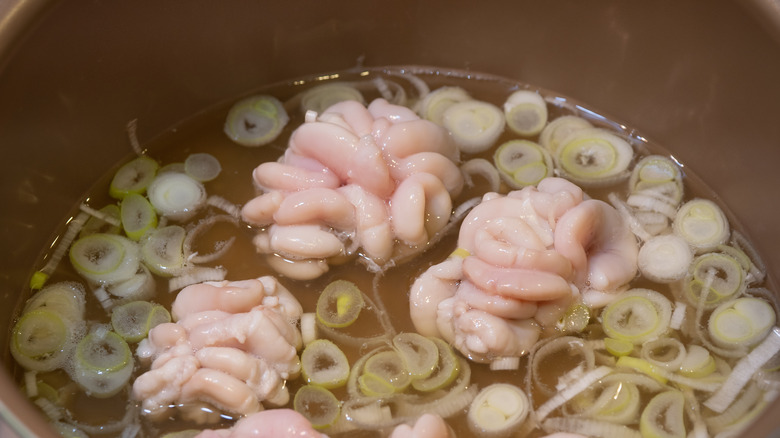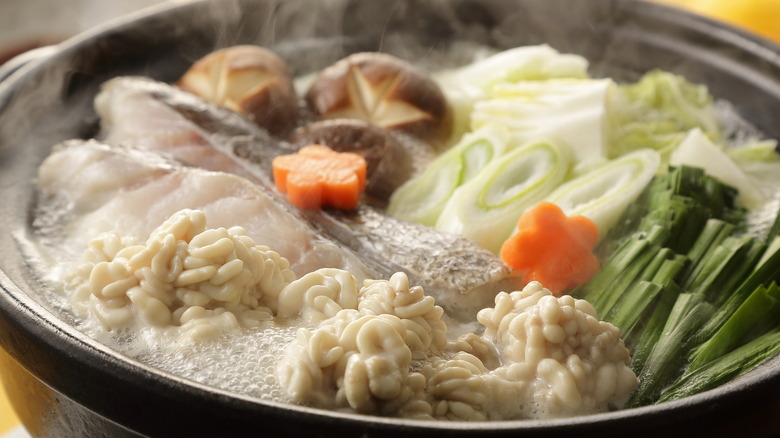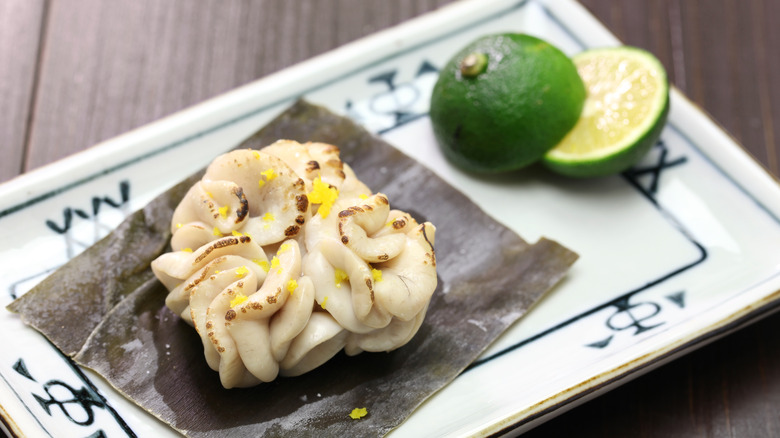Milt: The Unexpectedly Luxurious Ingredient You Should Know
If we are honest with ourselves, we'll do anything, ANYTHING, to curb our hunger. It is one of our most primal urges to eat and stave off starvation, but that means throughout history we've turned to eat some foods that are quite different from our usual fan-fare to keep us full. We've taken to grilling up cow tongue, braising beef liver, and learned to enjoy other rare foods like Almas caviar, donkey cheese, and abalone snails.
People, and their taste buds, are inherently curious. Most of us have the mindset "I'll try anything once" rather than being picky eaters. In fact, as of 2019, 53% of Americans considered themselves foodies, per New York Post. If food looks, smells, or tastes good enough, we'll eat it no matter where it came from, and that may include milt. Simply put, milt is fish sperm, but before you scoot your chair back and excuse yourself from the dining table, we'll remind you that humans have been thoroughly enjoying fish eggs since 1240 AD, and to this day we slather caviar on crackers and call it "high-society" food, so why shouldn't we enjoy milt too (via Solex Catsmo)?
What is milt?
Fish sperm is probably not something swimming around your thoughts all that often (and if it is, are you okay?), but it is something chefs consider a delicacy. The sperm of male fish and mollusks is called milt or "lattume" or "figatello" in Italy (per Fine Dining Lovers) and it isn't a common item found on the menu of your average steak and seafood restaurant. Milt was once considered a waste product and was thrown out, but humans hate wasting food so eventually, we learned how to extract the sperm, wash it, and cook it until solid. The Japanese have been eating milt for so long it is now considered a traditional food, and milt, along with bottarga (dried and salted ovaries of tuna fish) are highly valued Italian foods which are sought after for their unique origin and flavor.
When cooked, milt often looks pink-hued and Cook With Grazia says that it tastes delicately of fish and has a sweet note to it, she even compares it to veal brain, which is another delicacy. She, like other chefs, serves milt with pasta. Milt is viewed favorably in Italy and is often harvested from the testicles of tuna which live off the Sicilian coastline.
How do people eat milt?
At this point, you've got to be asking yourself: How does one eat milt? Well, sometimes it is boiled and can be served as a delicacy on pasta as it is done in Italy. Fine Dining Lovers adds that tuna milt can also be diced and coated in breadcrumbs before frying in olive oil. In Sardinia, it is common practice to grill preserved milt. Fish sperm is not intensely fishy and is just supposed to add a little salty flavor to whatever it's added to, so it has some flexibility when it comes to preparation. However, other countries and culinary cuisines, besides ones off the Mediterranean coast, use milt in their dishes.
According to Izzy Cooking, in Russia, herring and whitefish milt is often eaten by itself or pickled. In Japan, milt is especially popular and it's called shirako, or shiraku. It's white in color and velvety in texture, making it a delicious addition to shirako tempura, chawanmushi (a kind of custard), and even sushi (via On the Gas).
Where to find fish milt
Fish milt is an expensive purchase. According to Yamaseafood's website, it costs nearly a hundred dollars for 500 grams of cod milt. But why is this food so expensive? Well, milt is extracted totally by hand which is a time-consuming process, harvesters have to wait until spawning season, and not a lot of sperm comes from a single harvested male fish (via Chef's Pencil).
If that's the case, where do these gourmet restaurants serving sushi, pasta, and pickled herring get this almost unheard-of ingredient? "Maximising the Value of Marine By-Products" (via ScienceDirect) tells us that milt is often collected and then sold directly or in high-end markets fresh, frozen, or dried, while milt pulled from herring or mackerel is canned and sold commercially. From there it can be prepped any way you prefer and served on a variety of dishes.
Serious Eats says that cod milt can be found at Japanese and Korean marketplaces and is easy to cook. In addition to fish milt being easy to cook up, it is also a good nutritional resource, but benefits may vary depending on what kind of fish your milt is harvested from. Herring milt in particular is regarded for its impressive amount of protein and amino acid (via Holizen).



